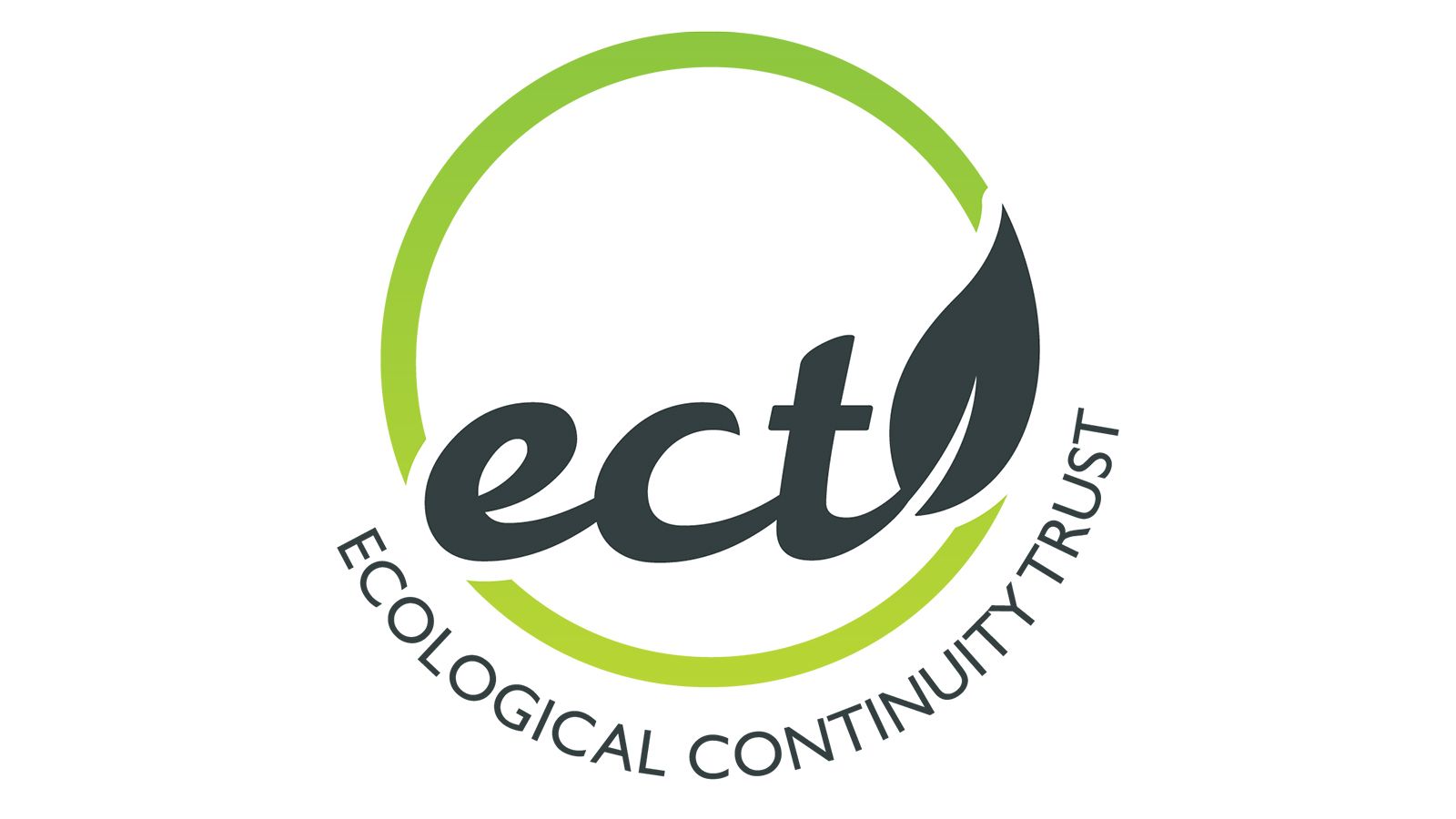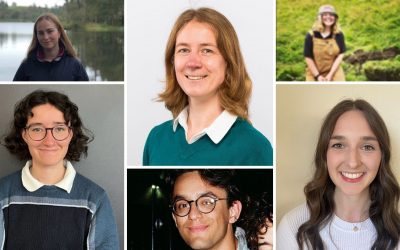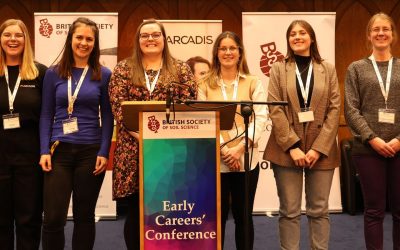The Ecological Continuity Trust (ECT) is a unique ecological research charity working across the UK to support long-term ecological field experiments (LTEs) and monitoring. Formed in 2008 in response to the loss of LTEs across the UK, our vision continues to be the development of a network of LTEs that involve genuine ecosystem manipulations in the real world and true replication for statistical purposes. This includes safeguarding existing high-quality experiments and data, as well as facilitating new experiments.
We aim to ensure that experimental field ecology is at the heart of evidence-based policymaking, sustainable land use, and biodiversity improvement in a time of environmental change, thereby contributing to both science and society. ECT currently maintains a national register of 36 active LTEs across 37 sites in all four nations of the UK. These cover habitats ranging from grassland to woodland to upland peat bog and freshwater catchments, and experimental treatments ranging from land management techniques to manipulations simulating the effects of changing climate.
Many of the sites on our register have been running continuously as field experiments for decades and, in a couple of cases, for over 100 years (Park Grass and Palace Leas). Several include soil science research.
Climate Change Experiments on ECT’s National Register
In the UK, the impacts of climate change on biodiversity, agricultural productivity and any of the ecosystem services provided by nature all need to be understood at some level before we can learn to mitigate them in a rational and sustainable way. And that is where LTEs can be invaluable in helping to predict what might be ahead of us. The ECT includes within its network of currently-active LTEs five studies which set out from their beginnings to investigate the impacts of simulated climate change treatments on varying habitats and the ecosystem services they provide.
Buxton Climate Change Impacts Laboratory (BCCIL)
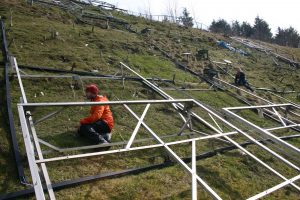
BCCIL was established in 1993 on upland calcareous grassland on the outskirts of Buxton, Derbyshire. It is now famous for being the longest-running climate change manipulation experiment in the UK. The experiment was the brainchild of the late Phil Grime (University of Sheffield) who launched the study and managed the site for most of its history.
The experiment applies three main climate manipulations either alone or in combinations with one another – winter soil warming, controlled summer drought and supplemented summer rainfall, with a simulated sheep grazing treatment each year in the autumn. In the first 15 years, research at the site focused upon the impacts of the climate treatments on the plant community only and revealed a short-term resistance to change with only gradual shifts in species abundance that were brought about by the functional ecology of the component species. Subsequently, investigations were added to address population-level adaptive and evolutionary responses within plants and within the soil microbial community, together with impacts on ecosystem process rates. Molecular fingerprinting of soil bacterial and fungal communities has shown marked shifts in these communities under chronic summer drought treatment and that those changes are related to plant traits which represent the quality of resource available to soil microbes, such as leaf dry matter content, foliar carbon-to-nitrogen ratios and the construction cost of leaf tissue (Sayer et al, 2017). This provides good evidence that climate change could affect soil microbial communities indirectly through altered plant inputs.
Read more at: https://www.ecologicalcontinuitytrust.org/bccil
RainDrop – The Millennium Experiment
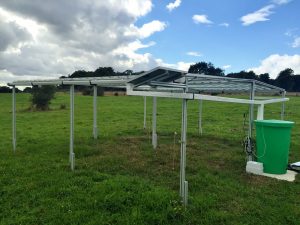
RainDrop is a new LTE, set up in 2015 on lowland calcareous grassland adjacent to Wytham Woods, Oxfordshire. The experiment is funded for its first ten years through a consortium comprising ECT, the University of Oxford, the Open University and the Patsy Wood Trust, but has been designed in an environmentally sustainable way with a 100-year lifespan in mind.
The experiment applies two climate change scenarios – drought conditions (50% below ambient rainfall) and enhanced rainfall conditions (50% above ambient rainfall) to species-rich grassland in order to study plant community responses and resilience to rainfall change. Fixed drought shelters with rotating roof slats are used on the site which adhere to the international DroughtNet experimental protocol.
It is early days yet for clear results and impacts from RainDrop, though it is safe to say that so far, within-year changes in biomass of the three main functional groups (grasses, legumes and non-leguminous herbaceous species) are largely meeting expectations of reduced productivity under drought conditions.
Read more at: https://www.ecologicalcontinuitytrust.org/raindrop
Birmingham Institute of Forest Research (BIFoR) Free-Air Carbon Enrichment Facility (FACE)
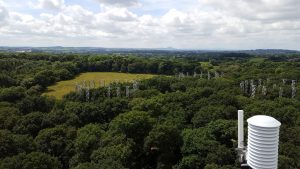
Image Credit: University of Birmingham
The BIFoR-FACE experiment is the newest LTE to be registered with ECT, established in 2017 in mature oak woodland at Norbury, Staffordshire. It is initially planned to run for nine years of continuous treatment to 2026. The experiment is one of the most awe-inspiring and ambitious long-term ecological field experiments anywhere in the world. Led by Rob MacKenzie (University of Birmingham), the research aims to provide a step-change in our understanding of how mature northern temperate forest responds to future increases in atmospheric CO₂. It is the only experiment to study this directly. Since mature forests make up a dominant part of the land carbon sink, they feature heavily in policymakers’ models of climate change. However, this relies upon their continued effectiveness under possible nutrient constraints and environmental stress. If experiments like BIFoR-FACE show long-term damage to that sink, then climate projections will be overly optimistic because the mitigation scenarios rely upon that strong mature forest sink. The stakes could hardly be higher.
The experiment elevates CO2 to 550 parts per million (approximately 150ppm above current ambient concentration) in small plots of 160-year-old oak trees. The whole canopy within each plot is infused with enriched CO2 24 hours a day, seven days a week throughout each annual growing season. A wide variety of research projects are underway at the site, including studies on soil fungal communities, fine root growth and soil moisture dynamics.
Read more at: https://www.ecologicalcontinuitytrust.org/bifor-face
Cors Fochno
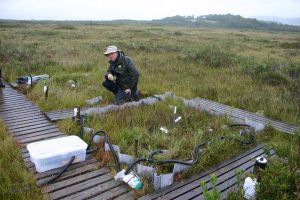
Cors Fochno LTE is located on lowland raised bog north of Aberystwyth on the River Dovey estuary in mid-Wales. Begun in 2010, it investigates peatland responses to climate change, focusing on the combined effects of drought and warming. The quantity of carbon stored in Northern bogs is vast, and concerns have been raised about how they might react to changes in climate over the long-term. It has been suggested that, should they dry out and be allowed to remain so, raised bogs may ‘flip’ from being net carbon sinks to net carbon sources which then accelerate climate change (Swindles et al, 2019).
Early results revealed little change in vegetation, but now White Beak Sedge is encroaching at the expense of Sphagnum under warming treatment. This may be important because Sphagnum mosses are much better than vascular plants at forming peat and locking away carbon. The warming treatments appear to be reducing methane emissions but increasing CO2 emissions. These slowly developing impacts stress the importance of long-term research.
Read more at: https://www.ecologicalcontinuitytrust.org/cors-fochno
Clocaenog
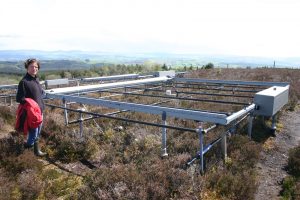
Established in 1998 on upland heath within Clocaenog Forest in north Wales, this LTE is the second longest-running climate change experiment in the UK. It uses simulated drought and warming treatments to test the effects of predicted climate change over the next 20-30 years on upland heathland ecosystems.
The experiment uses solar and wind-powered automated roof technology to apply drought and warming treatments. The drought treatments are imposed through rain covers between April and October and the warming treatments are imposed all-year-round by covering plots with a retractable reflective aluminium mesh curtain at night.
For the first 20 years of the experiment, only slight changes in the plant community structure were observed. More significant changes have taken place below-ground, for example in soil hydrology and respiration. Whilst such changes appear to be weakly linked with the smaller changes in above-ground plant communities, they may well be linked to more noticeable shifts in soil bacterial and fungal communities. Comparisons of soil community composition from two time points show that the climate treatments appear to be altering both soil microbial community diversity and composition throughout the course of the experiment. The findings suggest that above- and below-ground carbon fluxes can de-couple, and provide no strong evidence of acclimation to environmental change at a decadal timescale. However, below-ground processes do appear to be more sensitive to environmental change (Reinsch et al, 2017).
Read more at: https://www.ecologicalcontinuitytrust.org/clocaenog-1
Taken alongside other LTEs in ECT’s network, these experiments illustrate two general points that are vitally important for climate change policymakers to appreciate. Firstly, there is no substitute for experimental evidence and secondly, short-term results cannot be extrapolated to long-term trends. Long-term datasets have shown that annual changes, or even apparent ‘trends’ of up to three years’ duration can be noise in the data. In other words, short-term changes may align with, or be completely at odds with, the true long-term trend. Only when an LTE has run its course on decadal timescales do we genuinely attain an understanding of what is really going on. This has enormous implications for rational, evidence-based policymaking.
The views expressed in this blog do not necessarily reflect the views of the British Society of Soil Science.

